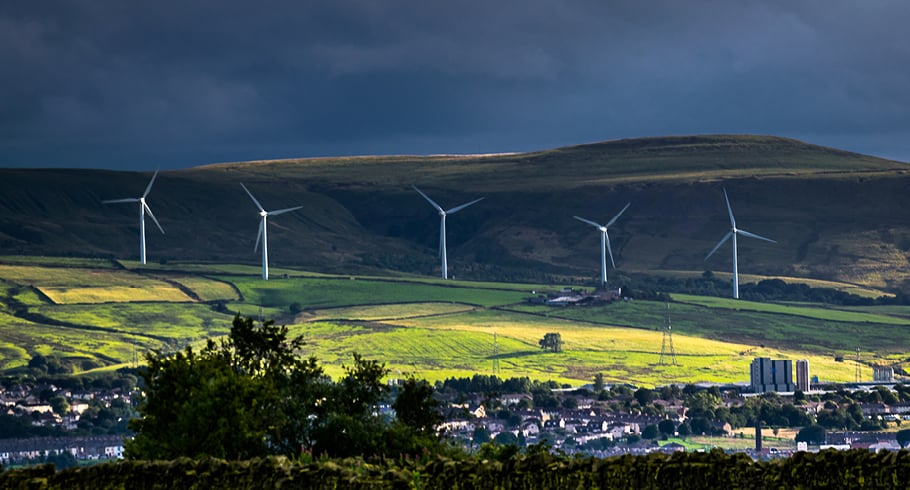On the path to net zero, many businesses view buying carbon offsets as an essential part of their strategy.
But according to new analysis from PricewaterhouseCoopers (PwC) and Bloomberg, the cost of buying into these schemes is set to double over the next few years.
There are also serious questions as to the value carbon offsets genuinely deliver – and the claims businesses can legitimately make when using them.
Costs to increase 256% by 2030
PwC found that companies in the FTSE 350 reported spending £38 million on voluntary carbon offsets in 2022. But based on current pricing models, Bloomberg calculates that by 2030, the same volume would cost £135 million – a 256% increase.
And by 2050, the equivalent cost could reach as much as £365 million.
This is due to supply failing to keep up with rising demand, and a shift to more robust schemes that cost more to operate.
When it comes to increasing demand, earlier research by Bloomberg predicts the carbon offset market will grow to $1 trillion by 2037 – up from $2 billion in 2021 – as long as “the right rules” are put in place (of which more in a minute).
Offset recap
For anyone unfamiliar with how offsetting works, each carbon credit is supposed to represent a tonne of carbon either avoided or removed from the atmosphere. For example, by investing in tree planting, or funding a renewable energy project to replace fossil fuel use for a village in a developing country.
The aim is to then ‘offset’ these projects against activities that a company cannot yet decarbonise, such as heating processes requiring natural gas.
But many offset schemes have come in for ‘greenwashing’ criticism due to poor management or inflated claims, with some even labelled immoral scams.
Undermining net zero
The UK’s Climate Change Committee (CCC) recently warned that without reform, the use of carbon offsets risked undermining net zero goals. It has asked the government to introduce “guidance, regulation and standards” to increase transparency and credibility in the market.
In the US, criticism from a group of US Democratic party senators has been even stronger.
The group – which includes former presidential contenders Bernie Sanders and Elizabeth Warren – claim that buying carbon offsets allows companies “to make bold claims about emission reductions and pledges to reach net zero, when in fact they are taking little action to address the climate impacts of their industry.”
Fraudulent investments
Their concerns were shared with the Commodity Futures Trading Commission, following a public call for information on climate-related financial risks.
The senators say that carbon offsets that do not deliver the climate benefits they claim constitute “fraudulent investments” – and that many schemes simply act as “a convenient and profitable way to market climate consciousness without requiring real action to reduce emissions.”
More trust needed for consumers
In a bid to provide more clarity and integrity in the market, the Integrity Council for the Voluntary Carbon Market (ICVCM) – which acts as the market’s independent governance body – recently published a Core Carbon Principals (CCP) and Assessment Framework.
This sets out requirements for “comprehensive and accessible disclosure” by market participants on how each offset project “calculates and quantifies its emissions impact” – as well as how it assesses “additionality and social and environmental impacts”.
The ICVCM hopes this regulatory-like approach to assuring credit integrity will help to clean up unscrupulous practice and provide consumers with more trust and certainty.
You can see more about the work of the ICVCM in this short video on the organisation’s site. It includes Mark Carney, the former Bank of England governor and now UN Special Envoy for Climate Action and Finance, talking about how “the voluntary carbon market has the potential to cut emissions by up to 2 billion tonnes by 2030.”
Carbon-cutting steps to take first
At npower Business Solutions (nBS), we and our sister businesses at E.ON work with many organisations on their journey to net zero, and always look at carbon offsets as a final rather than primary action.
There are key steps to consider first to reduce emissions – and these invariably reduce energy costs too. For example, energy efficiency, investigating on-site renewable energy generation, and installing heat recovery and heat pump technologies.
To assess which projects may be most effective at reducing your organisation’s emissions, check out our Net Zero Calculator.
You can also find out more about the solutions we offer and the ways in which we could help your business reduce emissions by contacting us at info@npowerbusinesssolutions.com. Or speak to your Client Lead or Account Manager directly if you’re an existing customer.

/npm214%20Digital_H_UB88.jpg)
/npm214%20Digital_H_UB76.jpg)


/npm214%20Digital_H_UB136.jpg)
/npm214%20Digital_H_UB132.jpg)
/npm214%20Digital_H_UB15.jpg)

/npm214%20Digital_H_UB139.jpg)
/Author%20Profile%20Phillips_Sally_G.png)
